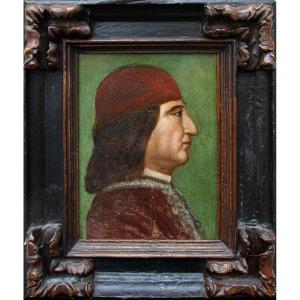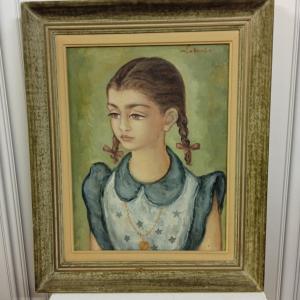Portrait of young man with red scarf
Oil on canvas, cm 40,5 x 30,3
With frame, cm 52 x 42
signed in the lower left: A. Vallone
The cultural environment of Naples at the end of the nineteenth century and the beginning of the twentieth is particularly sparkling: internationally renowned artists such as Domenico Morelli and Filippo Palizzi - known for portraits, works of religious subject and genre scenes from the romantic vein - are opposed to the young members of the School of Resin, which also include the famous Cecioni, De Gregorio and De Nittis, who aim to avoid the dictates of academicism, perceived as obsolete, to approach the scabro realism and the undefined and evanescent brushstroke of macchiaioli.
It is in this interesting socio-cultural context that the pictorial training of Antonio Vallone takes place: the artist, who took his first steps within the school of Morelli, specialized in genre portraits, especially of smiling young people and girls, scugnizzi o contadine of his homeland. The methods of representation of the chosen subjects are generally academic; the choice to privilege characters from humble social background could instead refer to the solutions adopted by members of the school of Resin, who set themselves the goal of giving life to an art usable by the masses and not only dedicated to the wealthiest fringes of society.
The young women of the people were a recurring subject with regard to the Neapolitan painting of the early twentieth century. In addition to the works of Vallone, this iconographic theme is treated in the paintings of the Neapolitan Vincenzo Caprile (1856-1936) and Attilio Toro (1892 - 1982). The vivacity of colors and shine are typical of the Neapolitan school of origin.




























 Le Magazine de PROANTIC
Le Magazine de PROANTIC TRÉSORS Magazine
TRÉSORS Magazine Rivista Artiquariato
Rivista Artiquariato